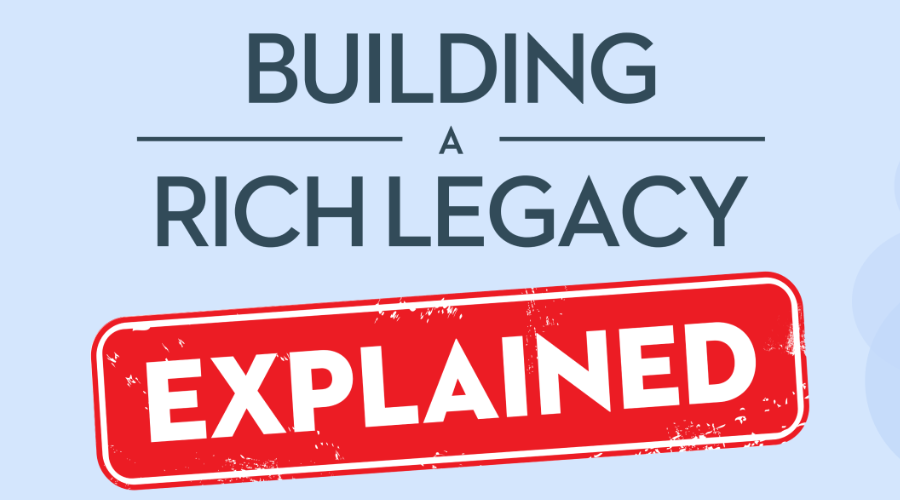Retirement savings usually comes into focus for Canadians in the lead-up to Registered Retirement Savings Plan (RRSP) season, as people scramble to make their contributions and start thinking more broadly about their retirement: Am I saving enough for retirement? How long will my retirement savings last? What is the best type of retirement savings plan?
In this article, we look at the different retirement savings plans in Canada and discuss how much we should be saving for retirement and how long our retirement savings should last. We also look into the impact of inflation on retirement savings and steps to take if you haven’t yet saved enough.
Retirement savings plans: Where should you put your retirement savings?
Retirement savings plans: Where should you put your retirement savings?
Registered Retirement Savings Plan (RRSP)
An RRSP is designed to encourage Canadians to save for their retirement by making contributions tax-deductible and allowing income earned in the plan to grow tax-free. As we live longer and spend more time in retirement than ever before, contributing to an RRSP is one of the best ways to ensure you’ll have enough money to last during your retirement years. RRSPs offer a wide range of investment options, which can help you align your investments to your goals and risk tolerance.
Tax-Free Savings Account (TFSA)
A TFSA is a savings plan that allows you to save and invest money on a tax-free basis. Unlike an RRSP, contributions to a TFSA are not tax-deductible, but all investment income earned within the plan grows tax-free. A TFSA is a flexible addition to your retirement savings strategy, as you can make withdrawals at any time – without penalty – for any of your needs. Like an RRSP, a TFSA allows you to hold a wide variety of investments.
Registered Pension Plan (RPP)
A Registered Pension Plan (RPP) is an employer-sponsored pension plan. There are two types. Defined benefit plans provide a specific benefit to the employee upon retirement, taking into account the employee’s salary and length of service. Defined contribution plans determine the benefit based on the amount the employee contributed to the plan during their working years and the investment returns earned on those contributions. Both plans provide tax-deferred growth until the employee retires and starts receiving benefits.
How much should I save for retirement?
There’s no simple answer or magic number to this question. Prior to the pandemic, Canadians said they needed to save $756,000 However, when asked recently, that number rose to $1.7 million, probably in response to skyrocketing inflation. But these numbers are just guesses. Figuring out how much you’ll need in retirement savings will depend on a number of different factors, including:
- Your age and current income
- How much you have saved in RRSPs, TFSAs, company pension plans, and bank accounts. Don’t forget to include your government pensions, such as the Canada Pension Plan (CPP) and Old Age Security (OAS) into your calculations
- Your target retirement date: At what age do you want to retire?
- The kind of lifestyle you want to have in retirement.
- Whether you plan on downsizing or aging in place. If you want to stay in your current home, will you need to do any renovations to make it more comfortable as you age?
The Government of Canada’s retirement calculator is a comprehensive tool that takes into account all your sources of income and can help you determine a number that works for you. Check out our article to find out how much you need to retire in Canada.
Average retirement savings by age: What the experts say
Many financial planners say you’ll need about 70% to 80% of your current salary in retirement to maintain your current lifestyle. That means if your income is $100,000, you should plan for $70,000 in annual retirement income. Another financial planning rule of thumb is to break down average retirement savings by age, as in the following table:
| Age | Retirement Savings target |
|---|---|
| By age 30 | One year’s salary saved |
| By age 40 | 3x your salary saved |
| By age 50 | 6x your salary saved |
| By age 60 | 8x your salary saved |
| By age 67 | 10x your salary saved |
In other words, by the time you retire, you should have saved 10x your salary. So, if you’re making $100,000 when you retire, you should aim to have $1 million in retirement savings.
How long will my retirement savings last?
There are many factors that will affect how long your retirement savings will last.
- Your lifespan. According to StatsCan, Canadians who retire at 65 can expect to live, on average, an additional 20 years. And this does not take into account improvements in health care. This means that we should plan for our savings to last at least 20 years – and probably longer.
- Your investment returns. Volatile markets are something no investor wants to see, but volatility has become a fact of investing. To ensure your investments continue to match your retirement goals and risk tolerance, it’s a good idea to conduct a comprehensive portfolio review with your financial advisor.
- Your lifestyle in retirement. Although expenses such as mortgage payments, rent, groceries, transportation, and insurance will be ongoing in retirement, the kind of lifestyle you hope to lead will also have a major impact on how long your retirement savings last. For example, if you plan to travel regularly during retirement, you’ll need to save more.
Impact of inflation on your retirement savings
Let’s say you’ve calculated your expected retirement income and built a comfortable nest egg to cover a long retirement. The challenge is that, if your income remains the same but your expenses rise due to inflation, you may find that your money is not lasting as long as you planned and that you need to rethink your retirement budget.
With the cost of living rising dramatically in the past few years, it’s no wonder that inflation is affecting the ability of 75% of Canadians to meet their daily expenses. And the numbers don’t lie. Using the Bank of Canada’s inflation calculator, we can see that a basket of goods that cost $100 in 2013 now costs $127.46* – a 27% increase in just 10 years.
The upshot is that you may need to adjust your retirement withdrawals each year to account for inflation. So, if you determined that withdrawing 4% of your nest egg would meet your financial needs in retirement – and then inflation rises by 2% – you might consider withdrawing 6% the following year.
How to make your retirement savings last longer
The good news is there are steps you can take to make your retirement savings last longer. Here are some ideas to consider:
- Continue saving. You must convert your RRSP to a RRIF by the end of the year you turn 71, so keep making contributions until then. Plus, you can still save for retirement in your TFSA.
- Improve your financial health. From establishing a personal budget, to paying down high-interest debt, there are simple ways to improve your financial health.
- Delay taking CPP and OAS. The longer you delay taking your Canada Pension Plan (CPP) and Old Age Security (OAS) benefits, the greater the amount you’ll receive. For instance, if you were to wait until you turned 70 to start receiving government pensions, you would receive 42% more in CPP benefits and 36% more in OAS benefits.
- Keep working. Consider taking on part-time work to boost your income, whether that’s a consulting gig, teaching at the local university, or turning a hobby into a business.
- Think of your home as part of your retirement savings plan. If you are a Canadian homeowner 55+, you have options to tap into your home equity to help fund your retirement that don’t require you to move or sell the home you love. Consistently, over 90% of Canadians say they want to age in place, highlighting the emotional value of staying in your home.
Boost your retirement income with funds from a reverse mortgage
Despite our best intentions, we may sometimes fall short of our savings targets: volatile markets, skyrocketing inflation, or large, unexpected expenses are just a few of the factors that can derail our retirement savings plans. The good news is there’s a safe and secure financial solution that can address your needs for greater financial freedom and cash flow in retirement: The CHIP Reverse Mortgage from HomeEquity Bank.
With a CHIP Reverse Mortgage, Canadian homeowners 55+ can access up to 55%** of their home’s appraised value in tax-free cash. You can choose to receive the funds as a lump sum or in monthly or quarterly installments. Plus, monthly mortgage payments aren’t required until you move or sell your home, which frees up additional cash. Best of all, you get to stay in the home you love.
Learn more about how a CHIP Reverse Mortgage works and/or call us toll-free at 1-866-522-2447 to see whether it’s the right solution for your cash-flow needs in retirement.
*As of June 2023
**Some conditions apply































